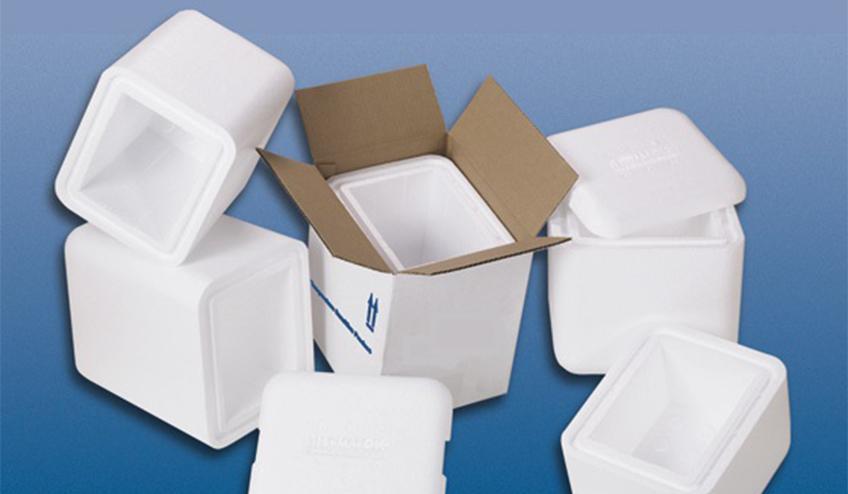Introduction to Cold Chain Packaging
Cold chain packaging refers to the specialized packaging solutions used to maintain the quality and safety of temperature-sensitive products throughout the supply chain. These packaging types are designed to provide insulation and temperature control to keep products within strict temperature ranges during transportation, storage, and handling. Maintaining an unbroken cold chain from manufacturer to consumer is vital for perishable items like foods, pharmaceuticals, chemicals, and more.
Types of Cold Chain Packaging Materials
A variety of materials are used in cold chain packaging to provide the necessary insulation properties and help products withstand temperature fluctuations. Some common examples include:
Expanded Polystyrene (EPS)
EPS foam is a cost-effective insulating material often used for Cold Chain Packaging boxes and containers. It has excellent moisture resistance and insulation qualities to protect products in transit. Die-cut EPS shapes can be molded to precisely fit contents.
Polyurethane (PU) Foam
PU foam panels provide protective cushioning and temperature control. They conform to odd shapes and sizes. Bonded PU board stock has a moisture barrier laminated on one side for added protection.
Gel Packs and Phase Change Materials (PCMs)
These gel packs and blocks can absorb, store, and release thermal energy at precise temperaturesover long durations. They are used as supplemental insulation or within other packaging components.
Fibreboard and Corrugated Cardboard
Linerboard or corrugated materials are often used as the exterior structure or interior liners/dividers in cold chain boxes. Waxed or laminated versions increase moisture resistance for extended product protection.
Envelopes, Bags, and Wraps
Insulated mailers, bags, and shrink wraps maintain temperatures during small-package shipments or grouping of individual items. Materials range from bubble wrap to PU-coated papers to EPS-laminated Tyvek.
Refrigerants, Coolants, and Ice Packs
Ice packs, dry ice, blue ice, and reusable gel/liquid refrigerants help maintain internal temperatures during transit when used alongside insulated packaging materials. Proper usage instructions must be provided.
Design Considerations for Effective Cold Chain Packaging
Besides selecting appropriate insulating materials, cold chain package designs must address many other factors to ensure reliable temperature control:
Sizes and Shapes
Container sizes should be properly scaled to contents with little excess internal space. Rectangular or rounded-edge designs minimize points of heat transfer. Compartmentalization maintains separation.
Closure and Seal Integrity
Secure, air-tight closures like adhesive sealing tapes or lock seals prevent moisture, air, or refrigerants from escaping. Interior gusseted designs allow for expansion/contraction.
Thermal Barriers and Wraps
Multiple wall thicknesses, vacuum insulation panels (VIPs), aluminized barrier films, and insulation wraps add thermal resistance for extended protection.
Packing Configurations
Proper cushioning and blocking techniques prevent shifting during transport. Products should not directly contact insulation surfaces to avoid cold damage.
Labeling and Handling Requirements
Labels provide usage, temperature, orientation, handling, and other necessary transportation information. Special racks and pallets may be required.
Monitoring and traceability
Smart sensors, data loggers, and RFID/GPS track temperatures and locations to verify cold chain integrity. Digital documentation aids compliance.
Quality Assurance and Certifications
Manufacturers adhere to standards like ISTA for testing and compliance. Certifications like BiTI ensure quality management. Traceability certifications give vendors assurance.
Temperature simulation and validation testing
Computational modeling and physical testing simulates transportation conditions to validate packs maintain required temperatures under all foreseeable circumstances.
Sustainability and Regulations
Materials meet regulatory compliance like FDA food contact and recyclability where possible. More sustainable design reduces environmental impact.
Role of Cold Chain Packaging in Supply Chains
With increasing globalization and demand for responsibly-produced goods, reliable cold chain packaging grows in importance. It enables:
- Longer shelf-lives for perishables through consistent temperature control
- International and long-distance trade of temperature-sensitive products
- More efficient, consolidated shipping of mixed payloads while maintaining product quality
- ‘Farm-to-fork’ traceability and assurances for food safety compliance
- Temperature-controlled warehousing and distribution center logistics
- Less product loss and waste due to temperature excursions in transit
When combined with efficient logistics, TMS tracking technology, and quality certifications, optimized cold chain packaging supports sustainability across supply networks while delivering products safely to consumers worldwide. Proper design and consistent implementation is key to ensuring public health and maintaining commercial viability in temperature-controlled supply chains.
Get more insights on this topic: Cold Chain Packaging



